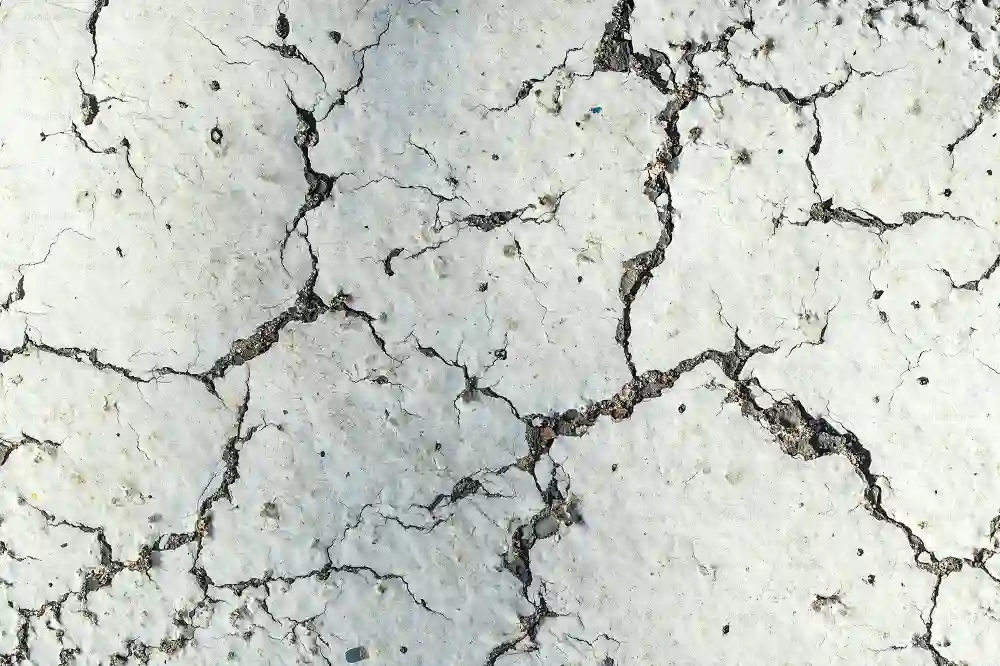Concrete structures are the backbone of Australia’s infrastructure—from commercial buildings and bridges to residential homes. Yet, over time, these structures are susceptible to the development of cracks due to factors like thermal movement, shrinkage, and environmental exposure. As a building professional, I’ve seen first-hand how concrete crack injection can be an invaluable method for repairing and strengthening compromised structures.
Understanding Concrete Cracks
Concrete is a composite material that combines cement, aggregates, water, and sometimes admixtures. While concrete is known for its strength and durability, it is not immune to cracking. Cracks can form for several reasons:
- Shrinkage and Thermal Movement: As concrete cures and later experiences temperature fluctuations, it expands and contracts. This natural movement can create small cracks over time.
- Structural Loads: Overloading or unexpected stresses can induce cracking, compromising the integrity of the structure.
- Environmental Factors: Harsh Australian climates, including extreme heat, heavy rains, and freeze–thaw cycles in some regions, can accelerate the deterioration of concrete.
- Chemical Reactions: The penetration of chemicals or water can lead to corrosion of reinforcement bars (rebar) within the concrete, further exacerbating the cracking issue.
Understanding the cause of the crack is essential before proceeding with repairs. A thorough inspection, often using non-destructive testing methods, helps determine whether crack injection is the most appropriate remedy.
What Is Concrete Crack Injection?
Concrete crack injection is a technique used to repair cracks in concrete structures by filling them with a specialised repair material—typically an epoxy or polyurethane resin. The primary goal is to restore the structural integrity of the concrete and prevent further deterioration.
The process involves:
- Preparation: Cleaning and preparing the crack to ensure optimal bonding.
- Injection: Introducing the repair material under pressure to fill the crack completely.
- Curing: Allowing the material to harden and bond with the existing concrete, creating a seamless repair that typically exceeds the original strength of the concrete.
This method is particularly useful for non-moving cracks. For cracks that continue to exhibit movement due to structural shifts or thermal expansion, flexible polyurethane injections are frequently recommended, as they can accommodate some movement while still preventing moisture ingress.
The Concrete Crack Injection Process
1. Inspection and Assessment
Before any injection work commences, a detailed inspection is undertaken. This step is critical as it involves:
- Determining the Cause and Extent: Experts assess whether the crack is structural or non-structural. Structural cracks may require additional reinforcement or a more comprehensive repair strategy.
- Evaluating Environmental Conditions: In Australia, where weather conditions can be unpredictable, it is crucial to consider moisture levels, temperature, and other factors that might affect the curing process.
- Lab Testing: Occasionally, samples of the crack area are taken for lab analysis to understand the composition and any underlying issues, such as corrosion of reinforcement.
2. Surface Preparation
Surface preparation is fundamental for ensuring the longevity of the repair. This phase includes:
- Cleaning the Crack: Dirt, loose debris, and any contaminants are removed using methods like compressed air or water jets. In some cases, mechanical tools might be used to achieve a clean surface.
- Drilling Injection Ports: Small injection ports or ports are installed along the length of the crack. These ports allow for the controlled injection of the resin and help distribute it evenly along the crack.
3. Sealing the Surface
Before the resin is injected, the surface of the crack is sealed along the outer edges with a high-strength epoxy paste or a suitable sealing material. This sealing ensures that the injected material is directed solely into the crack and prevents it from leaking out during the injection process.
4. Resin Injection
With the surface prepped and the injection ports in place, the resin injection process can begin. Key points include:
- Selection of Resin: The choice between epoxy and polyurethane depends on the nature of the crack. Epoxy resins are typically used for structural repairs due to their high bonding strength, while polyurethane resins are preferred for cracks that may be subject to movement.
- Injection Technique: The resin is injected under controlled pressure. This pressure is carefully monitored to ensure that the resin fills the crack completely without causing further damage. In some cases, multiple injection stages may be necessary to achieve complete filling.
- Monitoring the Process: During the injection, technicians monitor the flow of resin, ensuring that it permeates every part of the crack. This step might involve checking the injection ports to confirm that no voids remain.
5. Curing and Finishing
Once the resin is injected, it is left to cure. The curing time can vary depending on the type of resin used and ambient conditions. After curing:
- Removal of Injection Ports: The injection ports are removed, and the surface is cleaned up. The final step may include sanding or applying a surface finish to blend the repair with the surrounding concrete.
- Post-Injection Inspection: A final inspection ensures that the repair has been successful and that the crack is now fully sealed. Non-destructive testing methods might be used again to verify the integrity of the repair.
Materials Used in Concrete Crack Injection
The choice of material for crack injection is critical to the success of the repair. Two common types of resins are used:
Epoxy Resins
Epoxy resins are renowned for their high compressive and tensile strength, making them ideal for structural repairs. They offer:
- High Adhesion: Epoxy bonds strongly with the surrounding concrete, ensuring a robust repair.
- Durability: Once cured, epoxy creates a long-lasting repair that often surpasses the strength of the original concrete.
- Limited Flexibility: Due to their rigidity, epoxy resins are best suited for cracks that are not subject to further movement.
Polyurethane Resins
Polyurethane resins offer flexibility and are typically used in situations where the crack may experience movement. They provide:
- Flexibility: They can accommodate minor movements in the concrete without compromising the integrity of the repair.
- Moisture Blocking: Polyurethane is highly effective at preventing water ingress, which can help mitigate issues like freeze–thaw damage.
- Speed of Cure: These resins often cure faster than epoxy, making them a preferred option for repairs that need to be completed quickly.
Benefits of Concrete Crack Injection in Remedial Building Repairs
Concrete crack injection offers a host of advantages, particularly in the context of remedial building repairs:
Structural Integrity Restoration
One of the most significant benefits is the restoration of structural integrity. By filling the crack completely, the injection process helps to re-bond the concrete, effectively restoring its load-bearing capacity. This can be especially critical in older buildings or structures that have been exposed to harsh environmental conditions.
Cost-Effectiveness
Compared to more invasive repair methods, crack injection is relatively cost-effective. The process involves minimal demolition and disruption, reducing labour and material costs. In many cases, a crack injection repair can extend the lifespan of a structure, deferring the need for more extensive repairs in the future.
Minimal Disruption
In busy urban environments and active construction sites, minimising disruption is crucial. Crack injection is a non-invasive technique that often requires only small access points. This means that repairs can often be conducted without significant disruption to building occupants or operations.
Longevity and Durability
When done correctly, concrete crack injection produces a durable repair that can last for decades. The cured resin is often stronger than the original concrete, making it a reliable long-term solution. This durability is especially important in Australia, where buildings are exposed to extreme weather conditions.
Versatility
Concrete crack injection is a versatile repair method applicable to a wide range of structures—from residential homes and commercial buildings to bridges and industrial facilities. Whether the crack is due to shrinkage, thermal movement, or structural stress, injection techniques can be tailored to address the specific problem.
Challenges and Considerations
While concrete crack injection is an effective remedial technique, there are several challenges and considerations that building professionals must keep in mind:
Identifying the Root Cause
Not all cracks are created equal. A superficial crack may only require cosmetic repair, while a structural crack could signal deeper issues such as foundation movement or rebar corrosion. Misdiagnosing the root cause can lead to ineffective repairs or even further damage.
Environmental Conditions
Australia’s diverse climate can pose challenges during the injection process. For instance, high humidity or rain can affect the curing time of the resin, while extreme temperatures might necessitate adjustments in the injection process. It is imperative to plan repairs around local weather conditions and to use materials designed to withstand these conditions.
Resin Compatibility
The success of a crack injection repair depends largely on selecting the appropriate resin. Epoxy and polyurethane resins have distinct properties, and choosing the wrong one for a particular crack can result in an inadequate repair. It is essential to conduct thorough testing and consult with resin manufacturers to ensure compatibility with the existing concrete.
Skilled Labour and Equipment
Proper execution of concrete crack injection requires skilled technicians and specialised equipment. The process of installing injection ports, monitoring resin pressure, and ensuring complete filling of the crack is technically demanding. As such, it is crucial to engage experienced professionals who are well-versed in the latest injection techniques and safety standards.
Cost vs Benefit Analysis
While crack injection is generally cost-effective, it is not a one-size-fits-all solution. In some cases, the extent of the damage may necessitate more comprehensive repairs or even structural reinforcement. Building professionals must conduct a thorough cost vs benefit analysis to determine whether crack injection is the most appropriate solution for a given situation.
Industry Standards and Best Practices
In Australia, building professionals are guided by various standards and regulations when conducting remedial building repairs. The Australian Standard AS 3700, for example, outlines the requirements for concrete structures and provides guidelines on repair techniques. Adhering to these standards is critical to ensuring that repairs are safe, durable, and compliant with local regulations.
Best practices in concrete crack injection include:
- Thorough Site Assessment: Using non-destructive testing methods to evaluate the condition of the structure.
- Quality Materials: Sourcing high-quality epoxy or polyurethane resins that meet Australian standards.
- Controlled Injection Process: Monitoring resin pressure and ensuring complete penetration of the crack.
- Post-Repair Inspection: Conducting follow-up inspections to verify the success of the repair and address any residual issues.
By following these best practices, building professionals can ensure that remedial repairs are both effective and long-lasting.
Conclusion
Concrete crack injection is a sophisticated, reliable, and cost-effective method for addressing cracks in concrete structures. This technique not only restores the structural integrity of buildings but also extends their lifespan, providing peace of mind for owners and building professionals alike. As we face increasingly challenging environmental conditions and the natural ageing of our infrastructure, the importance of innovative repair techniques like crack injection cannot be overstated.
From the initial inspection and surface preparation through to the injection and curing phases, each step of the process is designed to ensure a seamless repair that withstands the test of time. By carefully selecting the appropriate resin—whether epoxy for its structural strength or polyurethane for its flexibility—building professionals can tailor the repair to the specific needs of the structure.
In Australia, where building standards are stringent and environmental factors can be harsh, concrete crack injection offers a pragmatic solution that minimises disruption and maximises durability. Whether you’re addressing a minor hairline crack or a more significant structural issue, understanding the intricacies of the injection process is key to achieving a successful repair.
Ultimately, investing in proper remedial building repairs is an investment in the safety, longevity, and performance of our built environment. For building professionals and property owners alike, staying abreast of the latest techniques and standards in concrete repair ensures that our infrastructure remains resilient in the face of time and nature. Concrete crack injection, when executed correctly, is not just a repair method—it is a vital part of maintaining the integrity and value of Australia’s concrete structures for years to come.









